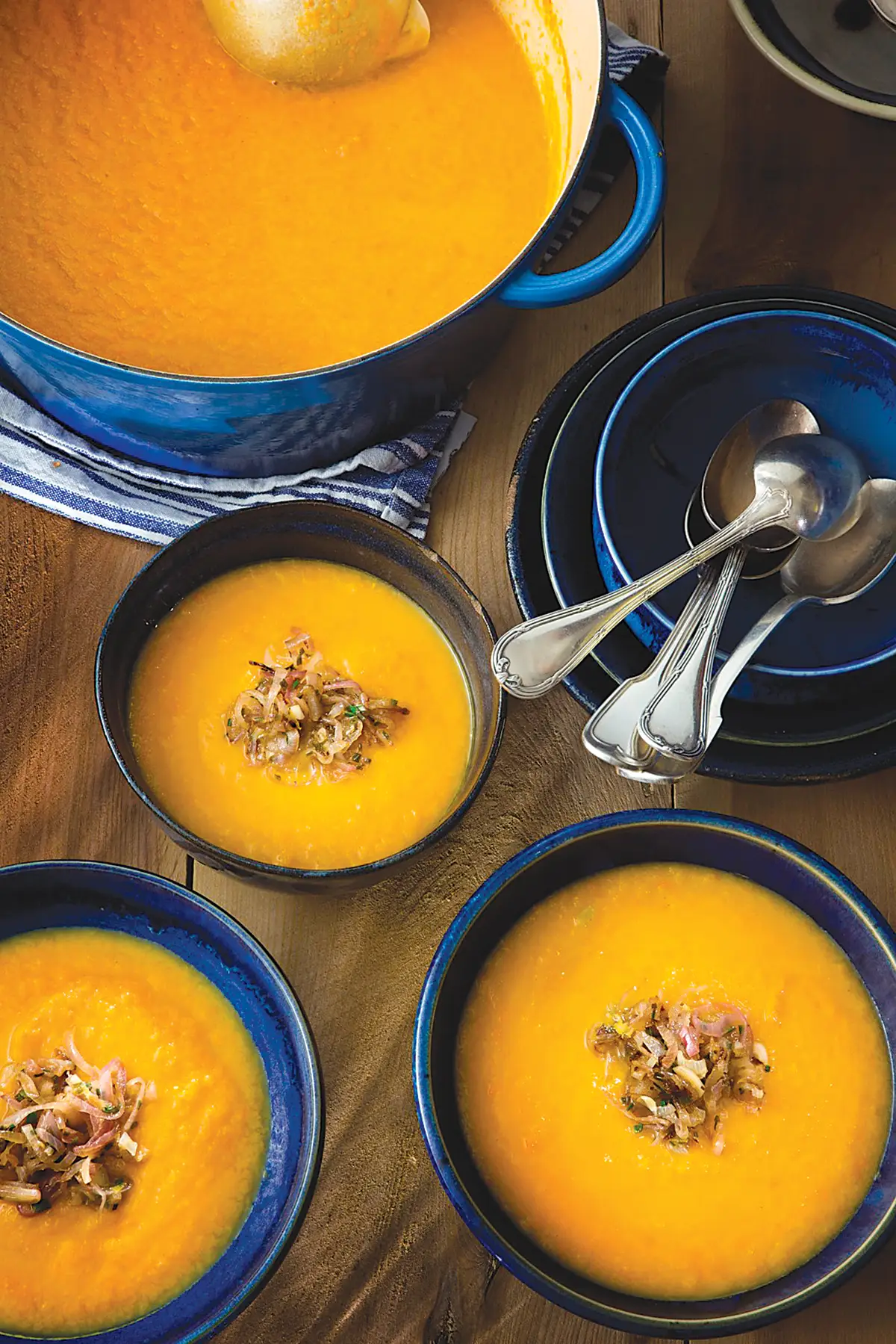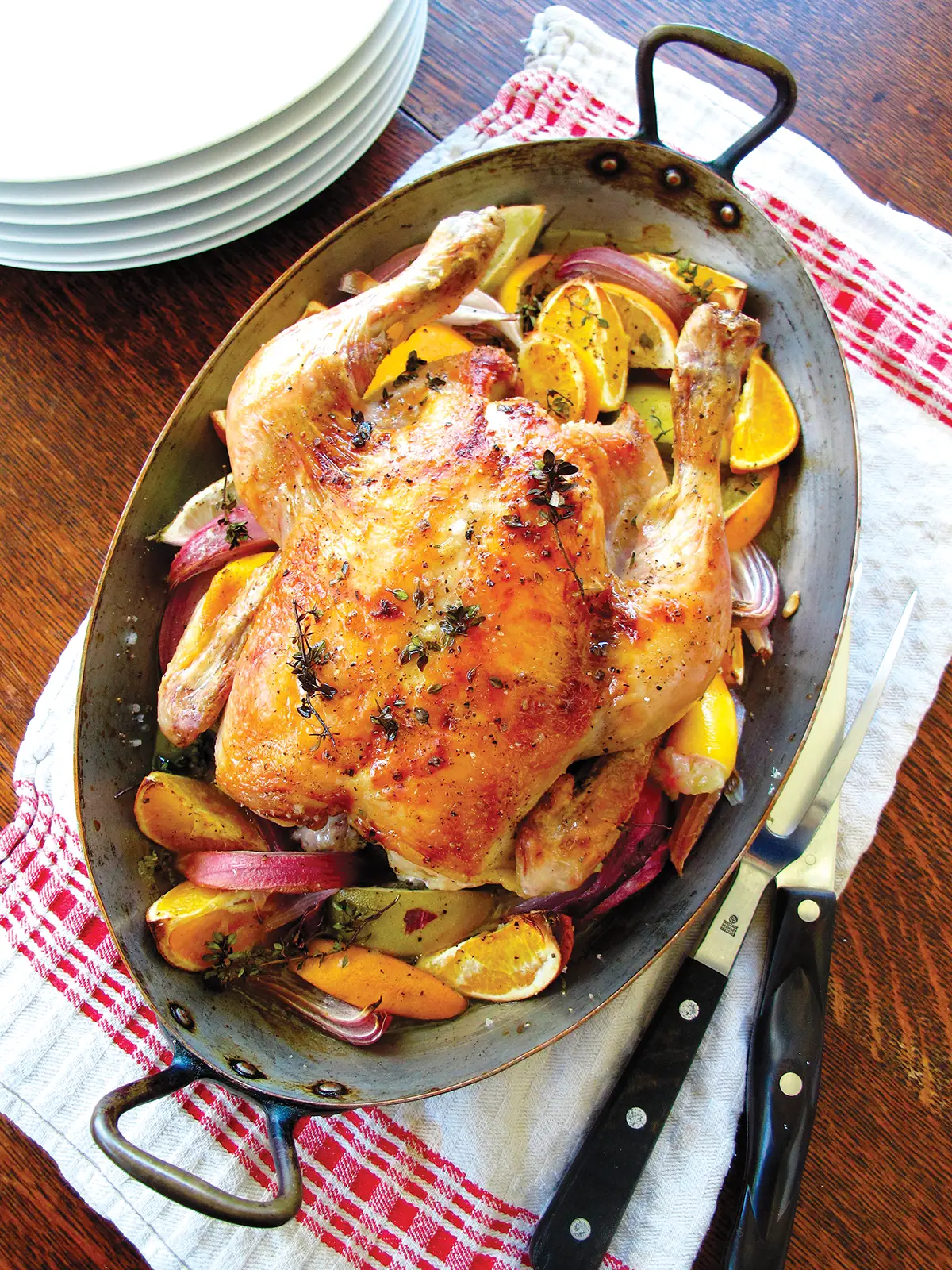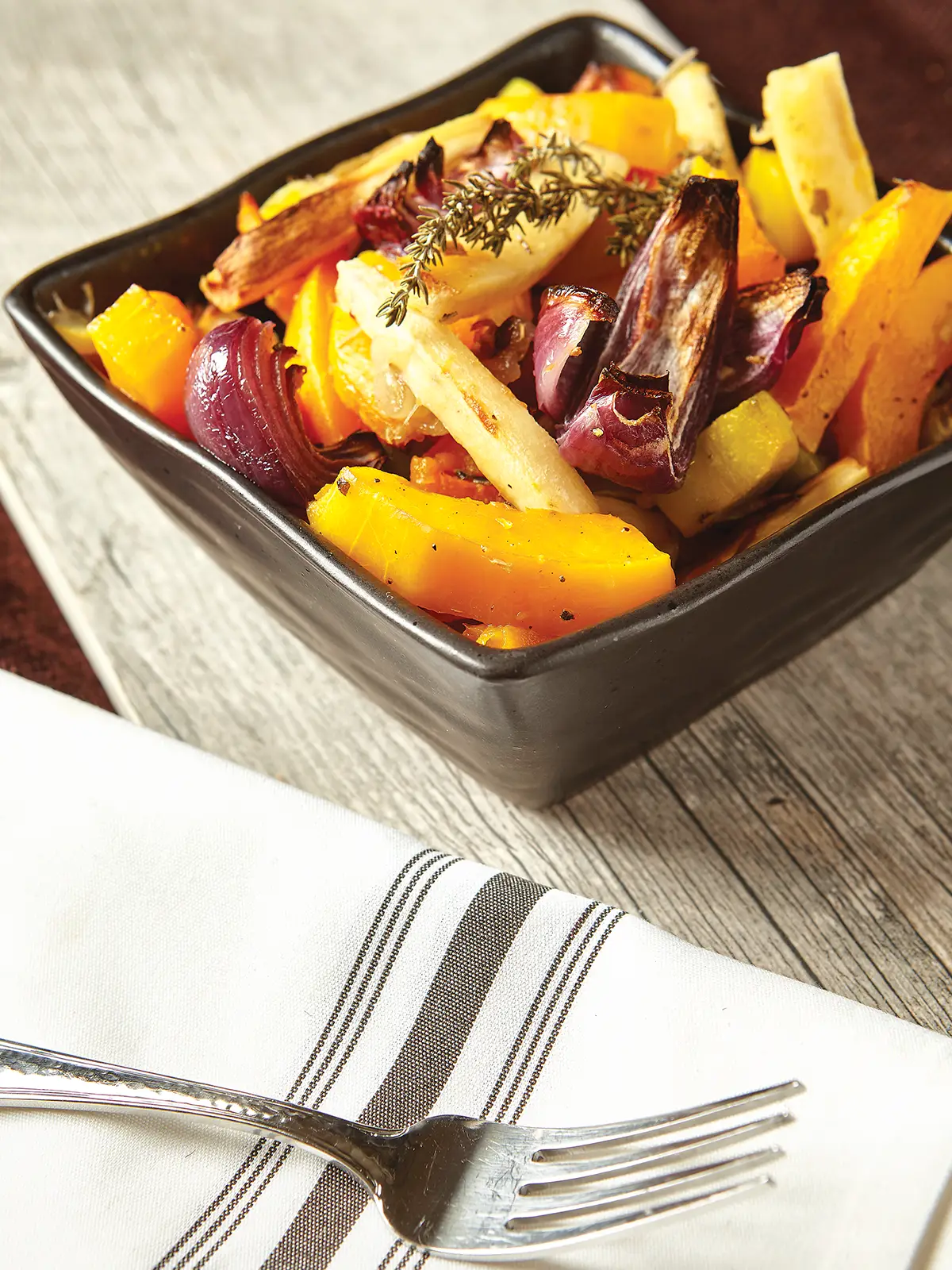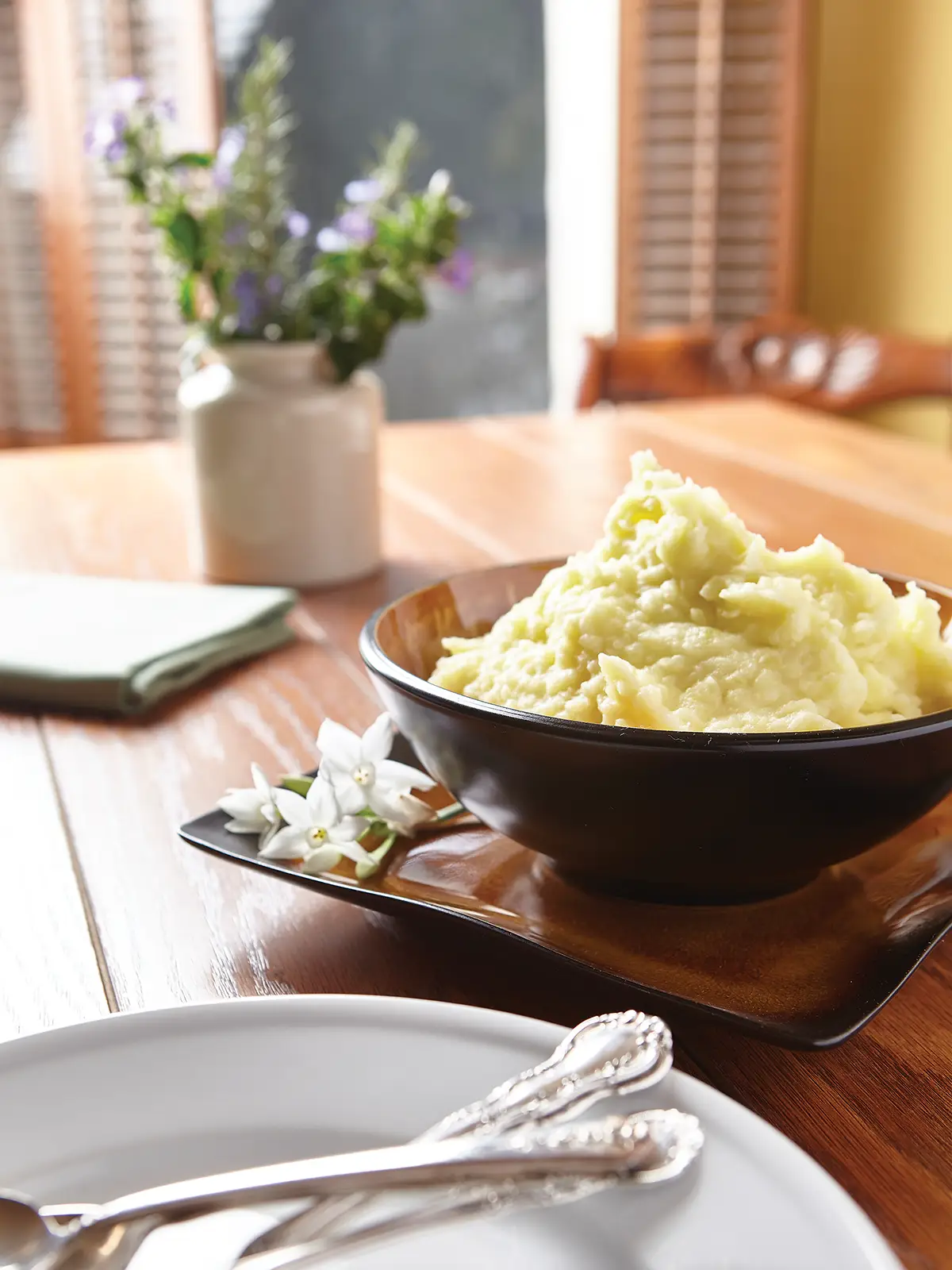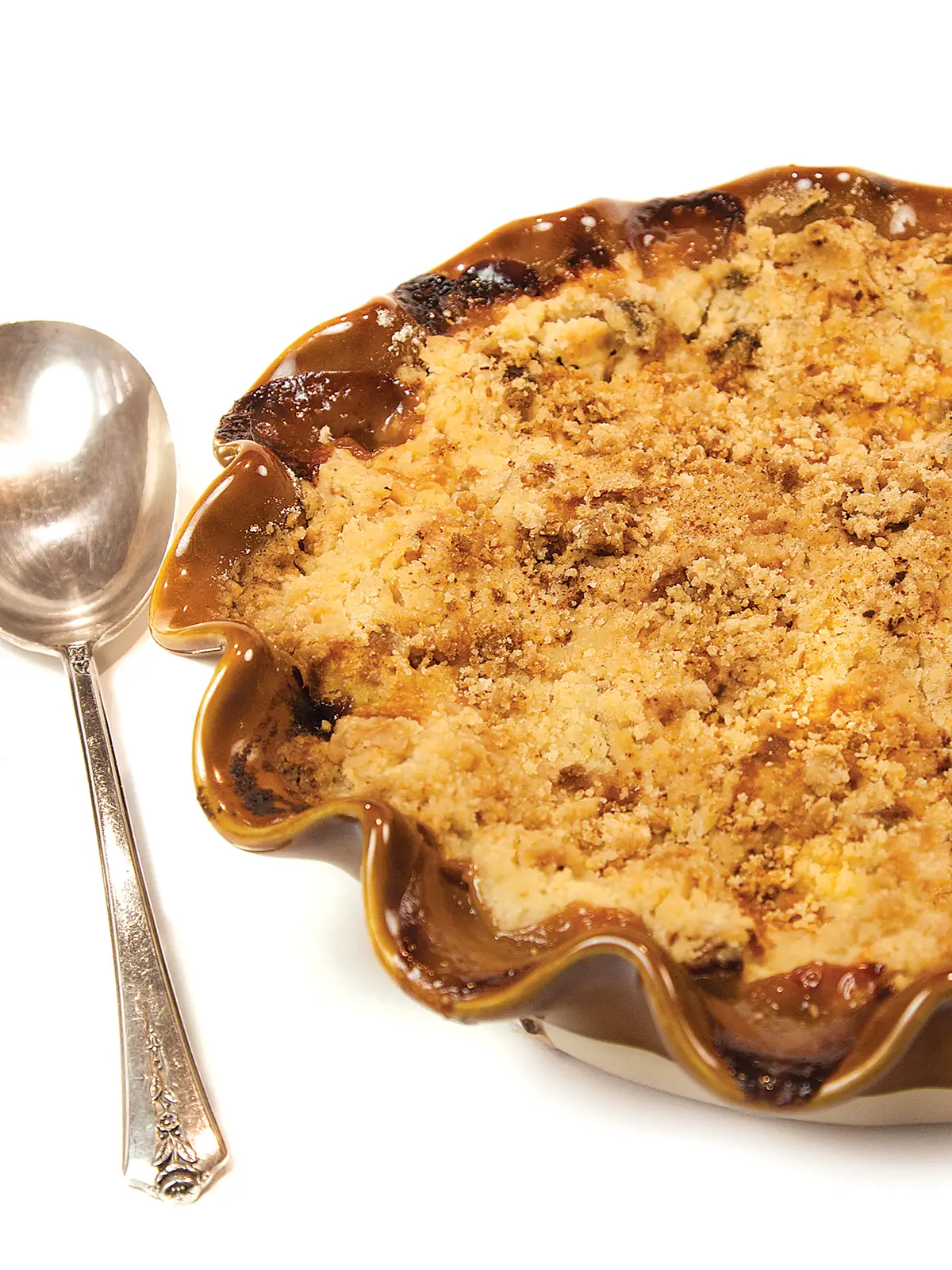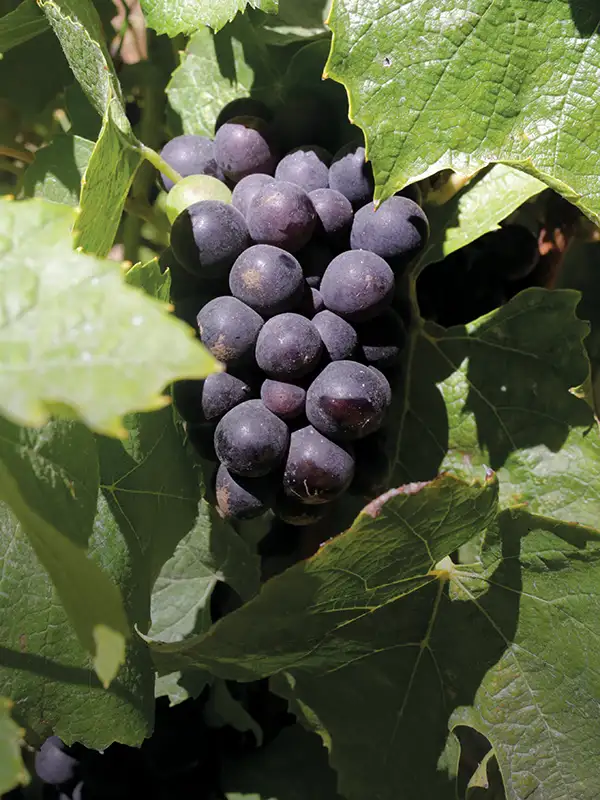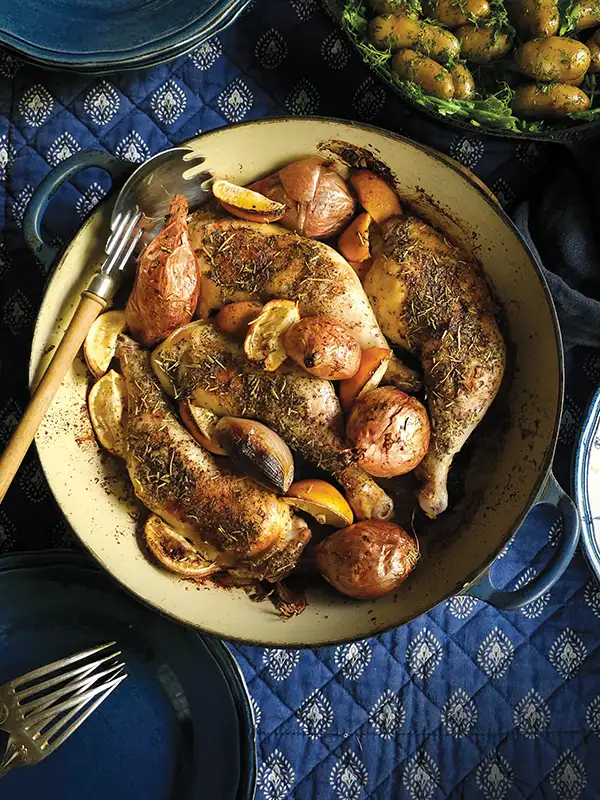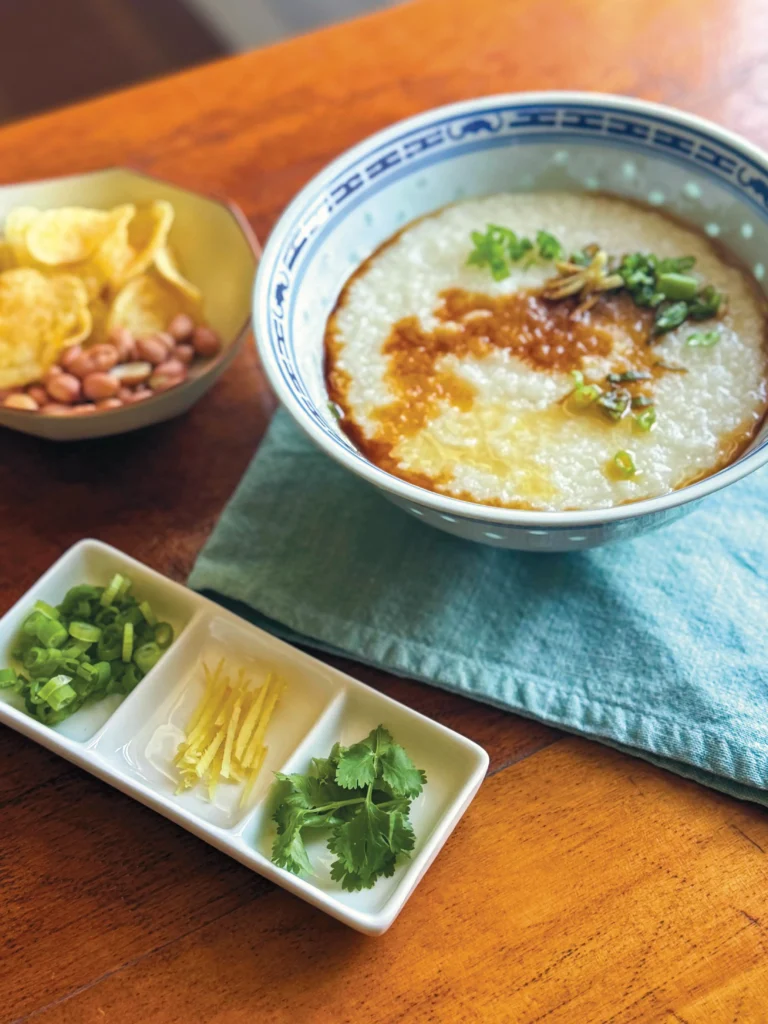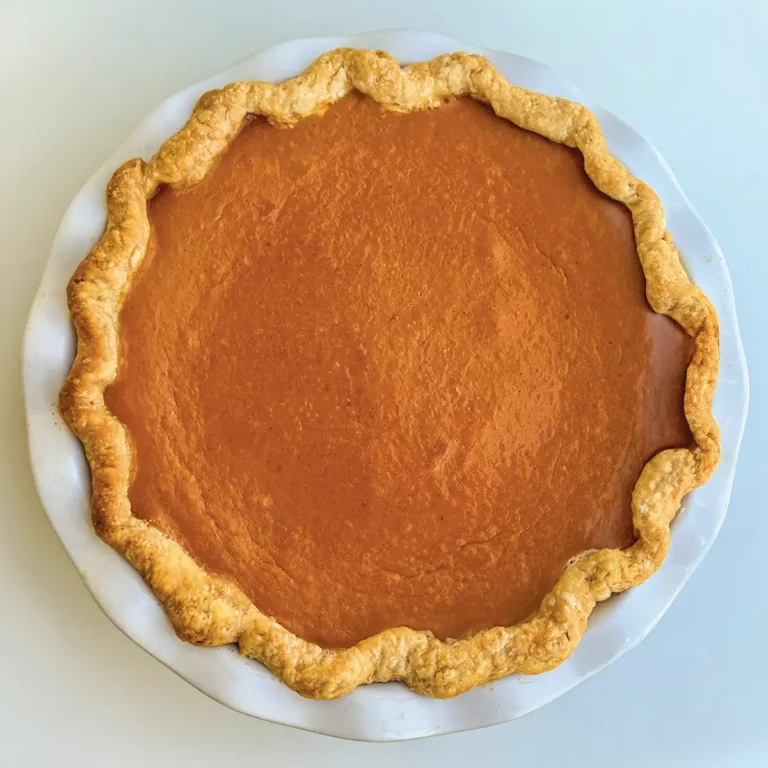Comfort Food
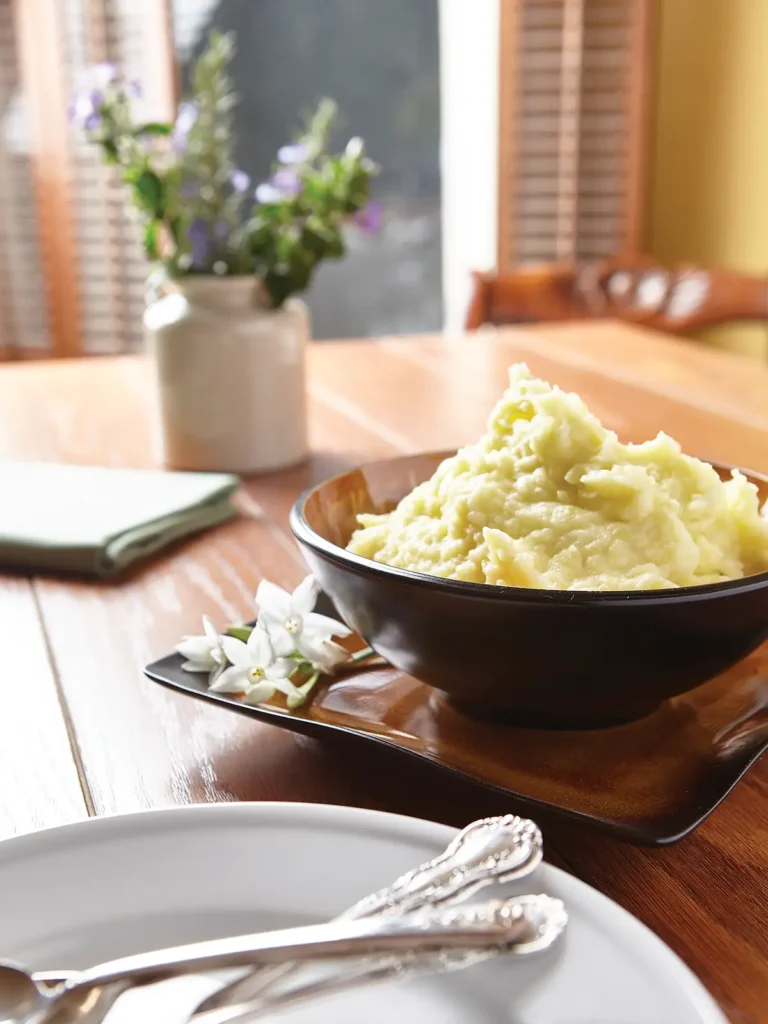
In his book A Platter of Figs and Other Recipes, David Tanis prefaces the recipes in a chapter entitled “North African Comfort Food” with this passage:
“What a strange idea: ‘comfort food.’ Isn’t every food comforting in its own way! Why are certain foods disqualified? Can’t fancy food be soothing in the same way as granny food? Must it always be about loaded memories, like Proust’s madeleine? Or can it be merely quirky, like M.F.K. Fisher’s tangerine ritual: she dried them on a radiator, then cooled them on her Paris windowsill… Comfort food—food that reassures—is different things to different people.”
Tanis’s menu, which includes a carrot and coriander salad and chicken tagine, draws an unexpected savory parallel to the very foods I call comfort food, namely a carrot soup and roast chicken with assorted trimmings. The two sets of very similar ingredients produce two different flavor profiles, each conjuring up its own emotional response.
All of which leads me back to the notion that comfort food is more about the people you shared that dish with, and the environment that enveloped you.
I surmised, after reading this and conducting a little survey, that in fact all food is emotional, to a greater or lesser extent, eliciting comfort from one person but not necessarily from all.
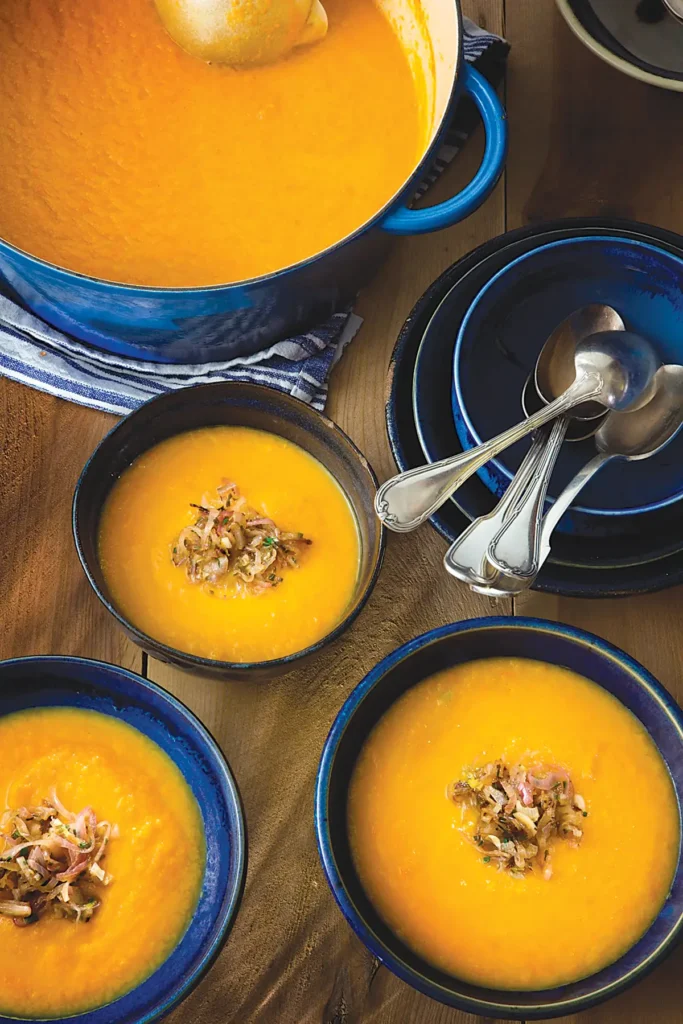
My quick, unscientific survey consisted of a one-question email to assorted friends: “If I say ‘comfort food,’ I wrote, ‘what is the first thing that comes to mind?'” It produced replies that I had anticipated: something starchy, rib-sticking or sweet. Soups were high on the list, from matzoh ball to chowder. Mashed potatoes appeared to be the firm favorite, and stews and roast chicken were mentioned by many, but so too were porridge, French fries, toast crusts, perfectly ripe peaches, a basket of figs, cake and a cup of tea.
I decided to go for a walk to ponder this further. I often do this when I write; it helps me clarify my thoughts and pull the thread of my narrative together. It was a beautifully crisp, cool morning, one that necessitated a jacket (more on this in a moment) and light scarf. My dog jumped at the chance to romp around the bluffs as I meandered through the trees overlooking the ocean. Thin wisps of clouds drifted on the horizon, and a brave paddleboarder glided across the silken sea below us. I thought about comfort, the food related to it and what it meant to me.
A series of images came to mind, all linked, oddly, to walks and the meals that followed. As a child, growing up in London, my family had a penchant for taking long walks across Hampstead Heath, often in bitter, damp weather. After an hour or two we would adjourn to Louis’s bakery, where we’d slough off our steaming coats, rubbing our chapped hands together to get circulation going, and order lashings of tea, cream-filled meringues and cake.
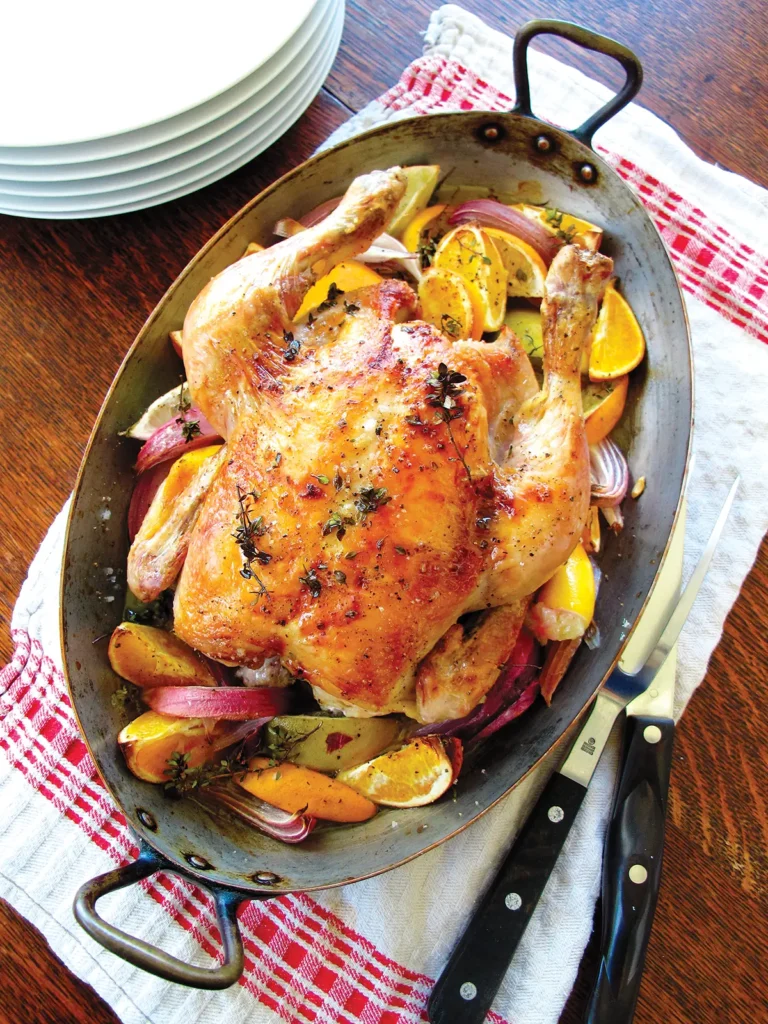
On other occasions we’d play, with two large teams of friends, an elaborate game of hide and seek in Highgate Cemetery between the Victorian monuments and the graves of Karl Marx and George Eliot in freezing fog. Afterwards we would pile into the cars, scurry home, pull off layer after layer of coats and sweaters, toe off muddy boots and all sit down to a giant nosh-up of roast chicken, spuds and vegetables.
My family in France was no different when it came to walks followed by food, in clement weather or foul. We hiked up mountains so that we could eat a picnic sitting on top with a baguette, fromage, jambon in hand; we’d tromp though the snow, freeze our toes only to rush back, thaw out and truly savor my grandmother’s hachis parmentier (French shepherd’s pie). We’d walk through alpine valleys, pink cheeked, our feet crunching on frost-covered lanes, only to return, peel off our winter garments, and delight in the ooey-gooey running cheese that melted in golden puddles off the raclette machine.
An obvious theme emerged as I circumnavigated the path along the bluff. For me the notion of comfort food meant walks, weather cold enough to require a jacket, followed by nourishing food. The mild climate in Southern California has made me wistful for those crisp mornings where a trace of your breath lingers in the air. I realized that I missed frosty days and pulling on warm sweaters, curling up by a fire to read a book, thawing out with a glass of spiced, mulled wine or warm apple cider after running errands outdoors. I mentioned my winter musings to a friend in London.
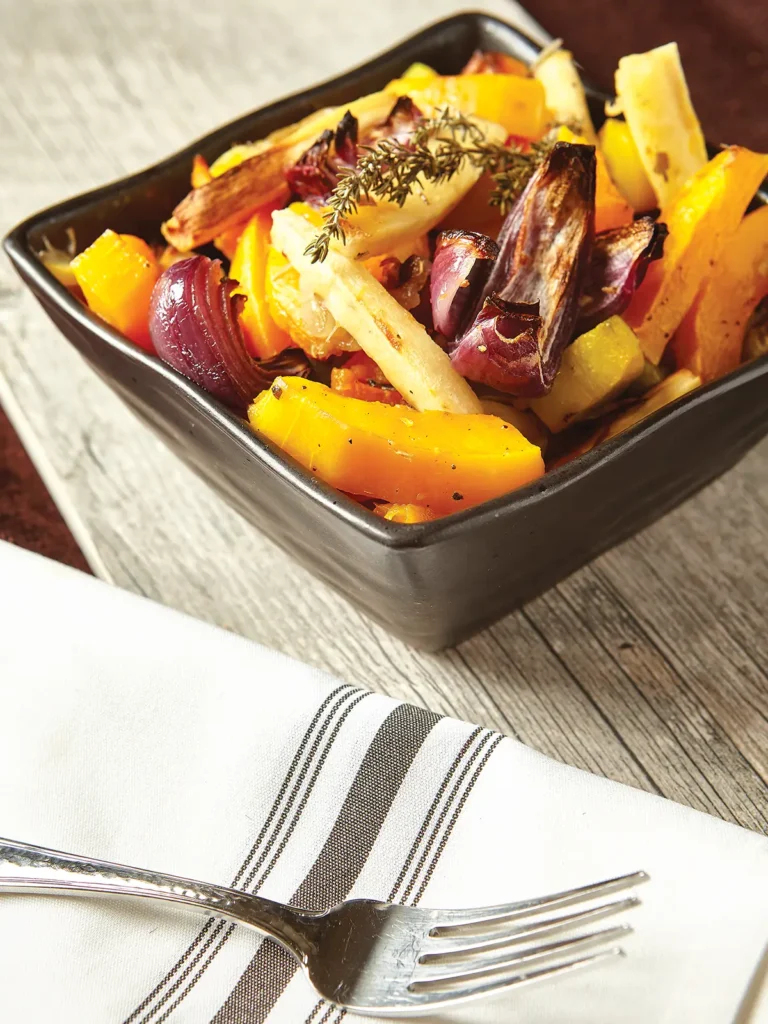
“Are you completely bloody mad?” she said. “You really want to be constantly damp, bone-chillingly cold, surrounded by a sniffling populace?” Well, when you look at it that way, perhaps not. All of which leads me back to the notion that comfort food is more about the people you shared that dish with, and the environment that enveloped you.
The comfort we find in these familiar dishes is like watching a sepia-colored home movie. We may laugh out loud, reliving the antics on the flickering screen, whilst a bystander would be bemused. Comfort food is personal, so personal it can be a little like marmite (a yeast spread from Britain). If you grew up with it, marmite on toast is pretty fantastic; if you didn’t, it can be repellent.
Each of us has our own comfort foods that are uniquely satisfying. While I may not rush at a plate piled high with kidneys on toast, I know those who would. The common denominator is the visceral satisfaction and pleasure we all derive from our particular comfort food, and the ability to share it.
As acclaimed chef Heston Blumenthal said, “To me, food is as much about the moment, the occasion, the location and the company as it is about the taste.”
